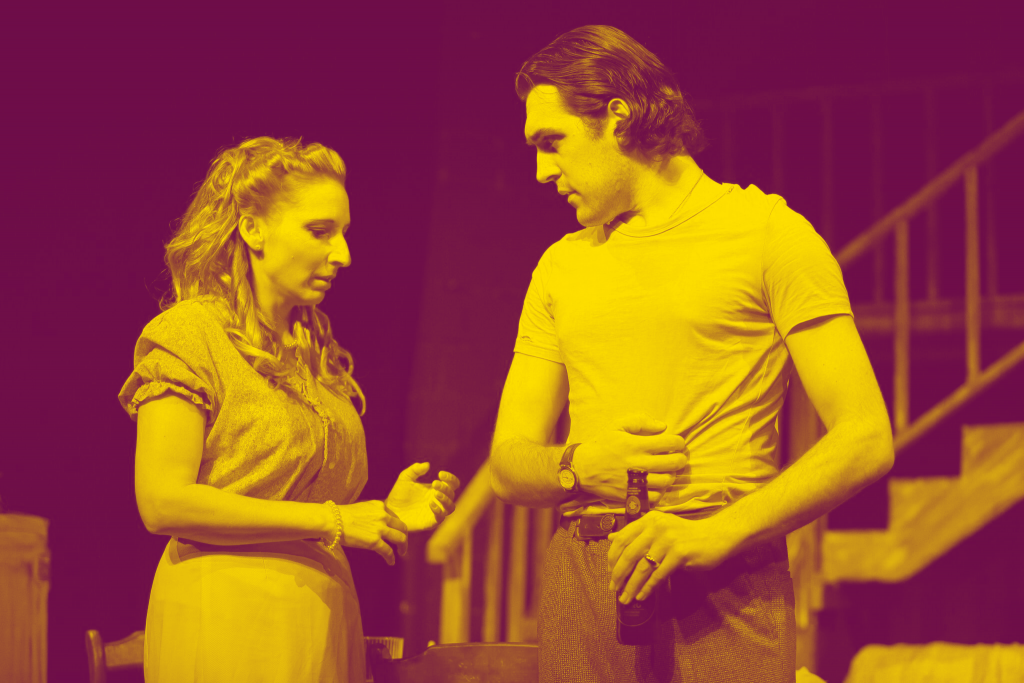
‘A Streetcar Named Desire’ // Brisbane Arts Theatre
‘A Streetcar Named Desire’ was stellar.
Tennessee Williams’ classic play has kicked off the Brisbane Arts Theatre’s 2020 season with a punch. For over 80 years, Brisbane Arts Theatre’s intimate space on Petrie Terrace has presented numerous plays, musicals and pantomimes, and ‘A Streetcar Named Desire’ is a perfect play for this space. The entire production, led by director Hannah Kassulke, has been brought together beautifully and is still as relevant a tale as it was at its debut in 1947.
Williams’ masterpiece play, set in steamy New Orleans, sees fading Southern belle Blanche DuBois arrives, seeking refuge after the loss of the family estate. The safety she seeks with her sister, Stella, is short-lived when Blanche is confronted by the cruelty of Stella’s husband, Stanley Kowalski, who is suspicious of Blanche’s motives and her strange past. As the play unfolds, we discover the mysteries of the loss of the plantation estate, sort rumours from the truth of Blanche’s sordid past and watch as she descends into madness, losing her grip on reality, all set against a backdrop of dishonesty, seduction, violence and passion.
The three-act show, presented with two intervals, is a three-hour journey of dialogue and action that was well-paced for an opening night performance. The stage was open upon arrival, allowing the audience to take in the various levels and components of the well-planned set, designed and constructed by Tim Pierce. A raised rear catwalk served as the street level of the two-story home in which the Kowalski’s occupies the lower level. A staircase brought actors to the stage level and the two-room flat is represented through strategic placement of furniture. Because of the raised stage and raked seating of Brisbane Arts Theatre, there were sight-line issues when actors were seated on furniture behind the dining table or dresser table. However, Kassulke doesn’t let the actors remain there for too long and generally used the stage effectively throughout the production.
One scene that didn’t hit the mark was during Blanche’s confession to Mitch regarding her dead husband. As Blache delivered her monologue, actors stood on the opposite end of the stage, representing the narrative she was telling. This detracted from the impact of Darbro’s compelling performance and storytelling.
The representation of the era and economic stature of the characters was beautifully presented and expertly lit by lighting designer Ryan McDonald. An understated, but well-planned soundscape, designed by Zoe Power, rounded out the production nicely, clearly and cleanly creating the atmosphere of sizzling New Orleans. Had the air conditioning given out, the audience would have had an incredibly immersive experience, sweltering along with the characters.
Credit goes to the cast and stage management team for the preparation and navigation of props and costumes on the stage. The characters were constantly changing outfits, drinking, smoking and navigating furniture all of which was cleanly blocked and built into the dialogue.
Costume designer, Erin Tribble, has collected a stunning array of outfits that represent the various characters beautifully and were era-appropriate. More attention could have been given to the hairstyles as the use of wigs and hairpieces missed the mark and were at times distracting.
Every character plays a pivotal role in this production and the performances displayed were truly outstanding. Victoria Darbro shines as the delicate yet disturbed Blanche, delivering a powerful and nuanced performance while almost never leaving the stage. Her portrayal of the flirty yet proper lady in the second scene was a gorgeous balance to the edgy, strained Blanche we meet at the beginning of the show. Her journey of mental strain and denial is both heartbreaking and pitiful and Darbro demonstrated skill and stamina in this iconic role.
In contrast, Claire Argente as Blanche’s sister, Stella, is much more sensible, pragmatic and grounded. There were some accent inaccuracies but Argente presented a charming difference and worked well with Darbro and Reagan Warner as Stanley.
The role of Stanley Kowalski made Marlon Brando a star and these are big shoes to fill. Reagan Warner displayed extremely strong vocals and generally, this was more imposing than his physicality. However, Warner dominated the stage, even when sitting at the poker table in half-light. His presence as ‘man of the house’ is felt in every corner, and in every one of Blanche’s nervous twitches. Across the cast, there were times where clarity and articulation gave way to volume and emotion, causing some key lines to be lost.
The main quartet was rounded out by Jon Darbro as Harold ‘Mitch’ Mitchell, Blanche’s love interest. His performance opposed the hectic nature of Blanche and Stanley, reminiscent of Forrest Gump’s slow and laboured drawl.
The cast was completed with another five supporting actors who all contributed to the continuing flow of the story through song and mime which covered costume and scene changes. Overall, the show was well-planned, well-rehearsed and cleanly executed on its opening night.
Brisbane Arts Theatre is a unique performance space that not every script fits into, but ‘A Streetcar Named Desire’ is a wonderful choice. If you have never seen the play, this is a perfect opportunity to view it in a cohesive and engaging production.
‘A Streetcar Named Desire’ runs at Brisbane Arts Theatre until 29 February. Tickets available at Brisbane Arts Theatre’s Website.




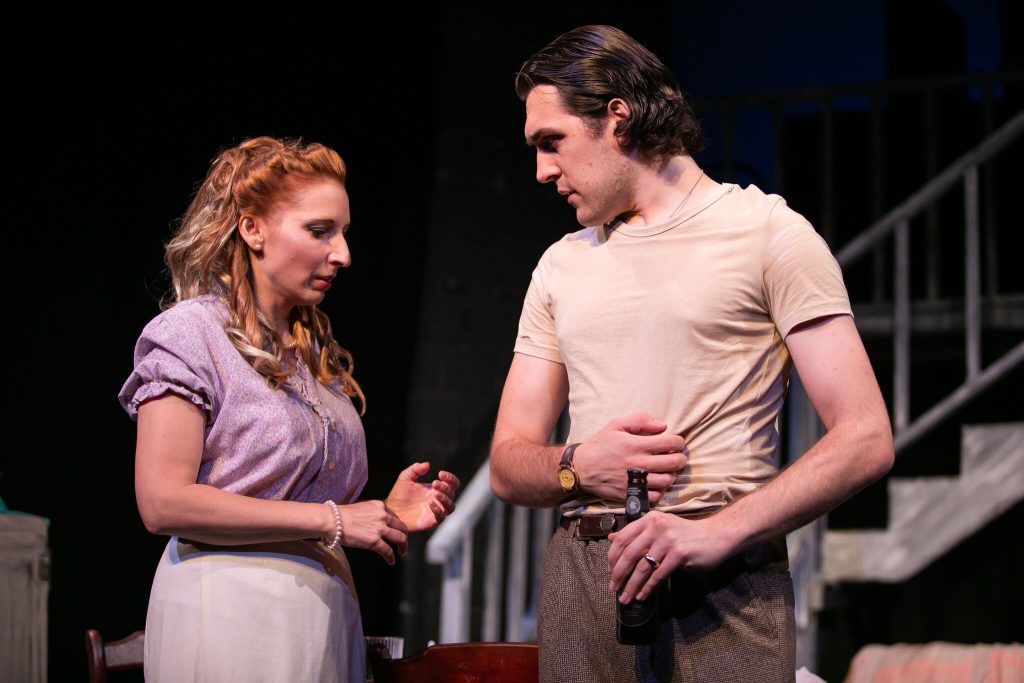
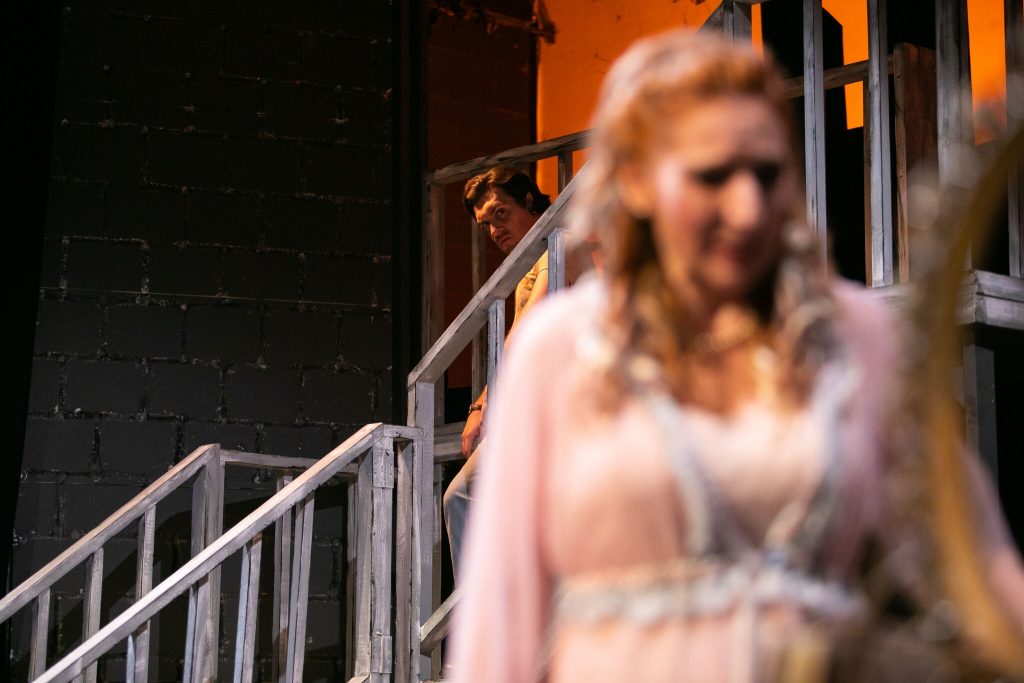
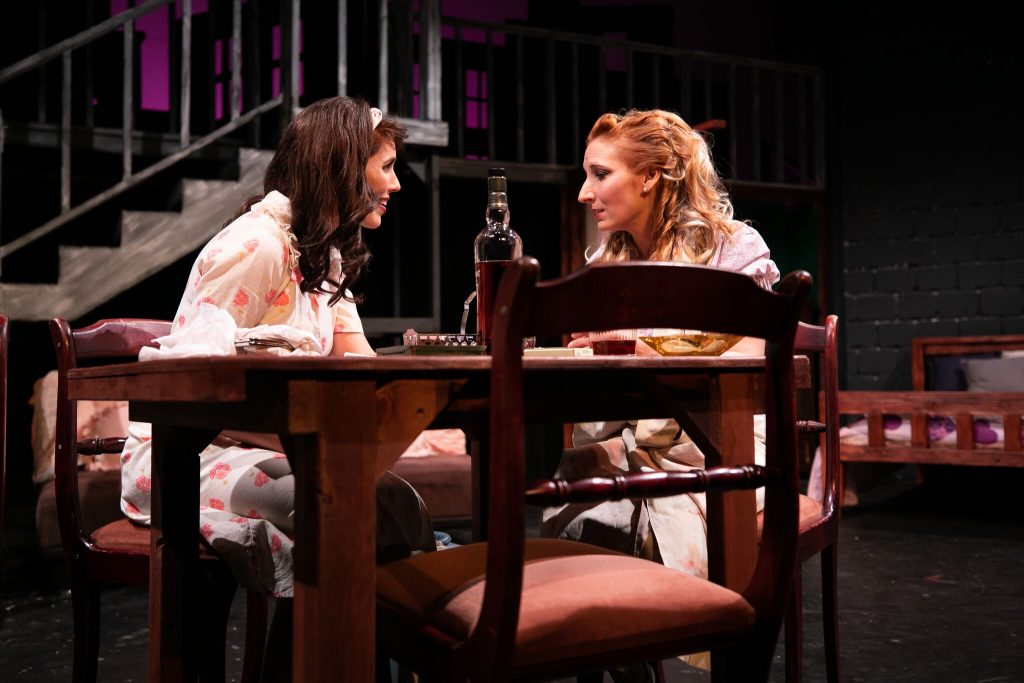
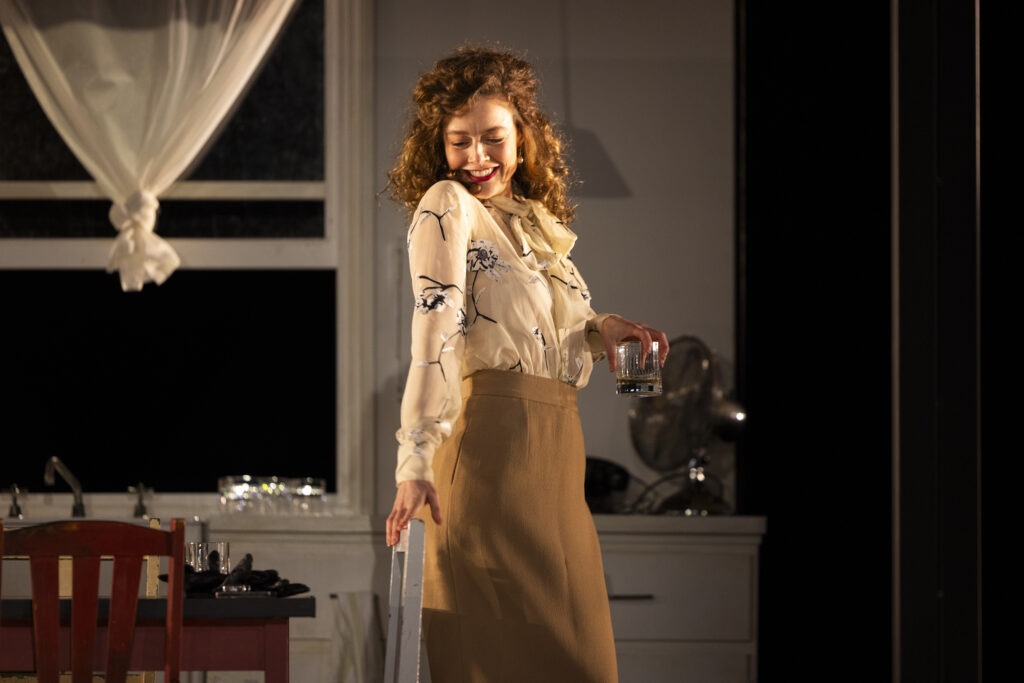

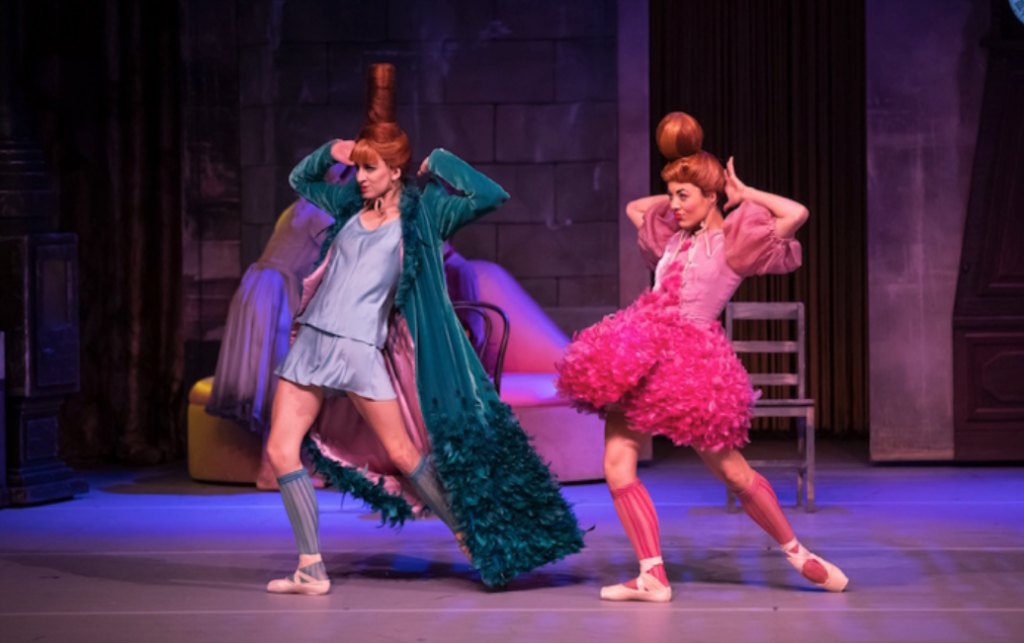
Four of us took in ASND last night and all found it very grand and fine. I like your idea about turning off the aircon. My only problem was with the actor who played Stella – perhaps she was having a bad night, but she seemed wooden, rigid and passionless. It seemed to throw off the dynamic with the two less inhibited actors playing Stanley and Blanche.